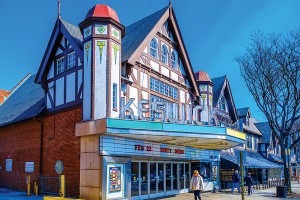Pew: Housing Market Is the Bright Spot in Philly’s Cloudy Skies
A younger, better educated, upwardly mobile horde has descended on Philadelphia, transforming swaths of the city into something barely recognizable to old-timers. This demographic touched off a residential building boom last year, the single strongest positive indicator of the city’s rebound, according to the Pew Philadelphia Research Initiative’s latest “Philadelphia: State of the City” update.
More than half of all Philadelphians are now under the age of 35, and 26 percent are between the ages of 20 and 34, when young adults are in the process of launching careers and households. Building places for these residents to live has become a growth industry: in 2013, the city issued building permits for 2,815 new housing units, the most in a decade. That new construction has an estimated value of $465 million, the highest on record.
The masses those developers seek to house also contributed to a seventh straight year of population growth for the city, with Census Bureau estimates placing the city’s population at 1,553,165. But this year’s increase was smaller than those in previous years, as the in-migration of Millennials, aging Baby Boomers and immigrants was offset somewhat by increased domestic out-migration.
Though the Pew report did not identify it as a factor, the recently completed citywide property reassessment known as the Actual Value Initiative could have contributed to the greater exodus, in spite of a plethora of city programs aimed at cushioning the blow for those hardest hit.
But a more likely factor was the continuing crisis in the schools. The Pew report notes that enrollment in traditional public schools fell six percent in 2013, the steepest one-year drop in at least the last decade. Charter school enrollment continued to climb, to the point where charters now enroll about half as many students as the School District does, and parochial school enrollment stabilized last year after a decade of decline. The total school enrollment trend is downward: where total enrollment in public, charter and parochial schools stood at 255,345 in 2004, it now stands at 225,272, a signal that families are still inclined to leave the city once their children reach school age. (This may not necessarily be a bad thing: the report points to a strong inverse correlation between the percentage of families with young children in a city and its overall economic performance — the fewer families with kids, the stronger the city’s economy.)
Other major trends noted in the report are sunnier, but all have asterisks attached to them. On one hand, murder plunged last year; the 247 homicides reported in 2013 were the fewest since 1968. On the other hand, as of right now, homicides are up this year.
The city’s poverty rate also dropped a bit — but Philly remains the poorest of the nation’s 10 largest cities, with 27 percent of its residents below the poverty line.
And while the city added some 3,800 jobs last year, bringing total employment in the city back above where it was at the start of the Great Recession, most of Philly’s peers passed this milepost a few years back, and unemployment remains stubbornly high at an annual average rate of 10.3 percent. Moreover, the gap between the city and the national (and state) rates last year was the largest in a decade.
The sunny real estate investment and development numbers may now pierce the clouds that partially block the other metrics, but those clouds, if not dispersed, could rain on the development landscape as well.


